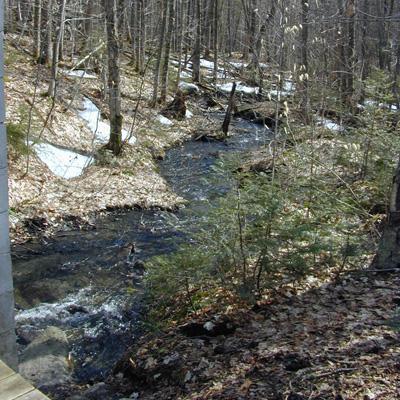A Survey of Nitrate Isotopes to Detect Atmospheric Nitrate Inputs to Stream and Soil Waters of Forested Watersheds in the Northeastern USA

Nitrogen pollution of ecosystems from atmospheric sources has widespread effects on forests and streams that provide forest products, clean water, and aquatic habitat. Effects are pronounced in the Northern Forest region where nitrogen inputs from atmospheric sources are among the highest in the nation. Concentrations of nitrate, a form of nitrogen, in precipitation and stream waters have increased in the region. Most inputs of nitrate from atmospheric sources to forests are retained in vegetation and soils until some is later remobilized to streams. However, some nitrate from atmospheric sources may be transported to streams during rainstorm and snowmelt events, but research on the geographic extent and occurrences over time has been limited.
Two isotopes (chemical forms) of nitrate (15N and 18O) can be measured as "environmental tracers" to distinguish between nitrate from atmospheric sources and biological sources within a forest. From 2010 to 2011, NSRC researchers measured stream water chemistry and environmental tracers in 15 watersheds from New York to Maine to improve our understanding of the geographic extent of pollutant effects on forests, soils, and stream waters.
Researchers found considerable amounts of atmospheric nitrate sometimes present in soil and stream waters. The range of nitrate concentrations in streams was large, and substantial (10 to 30%) amounts of nitrate from an atmospheric source were measured in some streams during snowmelt, with little to none in other streams. Findings suggest that inputs of atmospheric nitrate to streams are more widespread among unmanaged forests than previously known and amounts may vary greatly over short distances.
Download printable version (PDF)
Download full final report (PDF)
